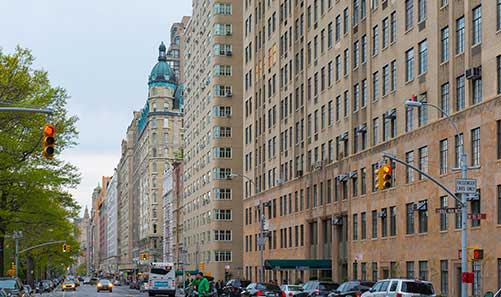Rent Control vs. Rent Stabilized Housing in NYC

Rent Control vs. Rent Stabilized Housing in NYC
Rent Control vs. Rent Stabilized Housing in NYC
In New York City’s very expensive housing market, a rent controlled or rent stabilized apartment is heralded as the golden ticket of real estate. But these are two very different concepts that can be easily confused given the complicated laws that make up New York’s affordable housing. Here’s what distinguishes one from the other, how to secure rent regulation, and the factors that can upend it.
What is rent regulation?
The blanket concept of rent regulation refers to laws enacted by the New York government to protect residents from dramatic rent increases by their landlords. New York City’s rent regulations date back to the 1920s, when the city enacted emergency rent laws in response to a sharp increases in evictions and a decrease in housing construction following WWI. Since then the city has upheld different forms of rent regulation, both through rent control and rent stabilization. Such laws have changed to react to the city’s always-shifting real estate market. For example, in the 1970s, rent stabilization laws were enacted to replace rent control as an effort to better adapt to changes in the housing marketplace.
Rent control vs. rent stabilization
So what makes the two concepts different? For one, rent control is a lot harder to come by since the city started phasing it out in the ‘70s. Today, about two percent of New York rental units are controlled while roughly 50 percent of units are stabilized, according to a study by the Furman Center. Rent control guarantees tenants very minor monthly price hikes—think of tenants who still pay close to a 1970s rent in New York neighborhoods now known for multi-million dollar apartments. If it sounds too good to be true, it kind of is. It is not possible to secure rent control upon moving to a new place. Only tenants—and in some cases, their rightful successors—who have continuously lived in their apartment since July 1, 1971 are eligible. (Yes, 1971!) Another requirement says the unit must be in a building constructed before 1947. Today, when a rent controlled apartment becomes vacant, it either becomes rent stabilized, or, if it is in a building with less than six units, typically removed from regulation altogether. That means the total number of controlled units has slowly decreased as units become stabilized or deregulated. Rent stabilization, on the other hand, generally applies to apartments in buildings of six or more units constructed between 1947 and 1974. Stabilization may also apply in buildings with three or more apartments constructed or extensively renovated since 1974 with certain tax benefits, which includes the wave of affordable housing that is now being developed in New York. Once you are in a stabilized apartment, your landlord can only increase your rent by a percentage determined by the Rent Guidelines Board. If you are wondering if your building is subject to stabilization, there is an easy way to check.

How long does rent stabilization last?
So you’re lucky enough to live in a rent stabilized building? Just be aware it won’t necessarily last forever. Current NYC laws permit a property owner to deregulate rent in a few situations. The first is when a unit with legal regulated rent of $2,700 or more becomes vacant (it’s known as High-Rent Vacancy Deregulation); the second is when a unit with legal regulated rent of $2,700 or more is occupied by tenant whose income has exceeded $200,000 in each of previous two calendar years (known as High-Rent High-Income Deregulation). If the landlord does major capital improvements to the building or to the individual unit itself, that could also cause increases. Otherwise the unit’s legal regulated rent may only be increased through annual percentage increases set by the Rent Guidelines Board.
How to find one
So you’re not landing a rent controlled apartment, but you’ve got a fighting chance to find something rent stabilized. In older buildings, landlords do not necessarily advertise rent stabilization—in some cases, landlords don’t even tell tenants at all, then charge a higher rent than the law allows them to. Always do your research (the site AmIRentStabilized.com is a good place to start) into whether a building is rent stabilized, especially if you’re renting in an older building with six or more units. In new developments, rent stabilized units—simply called “affordable housing”—is offered directly by the city. You can keep track of new units hitting the affordable housing market through the NYC HPD. If you meet certain income restrictions, then you can apply to be entered in the (very competitive) lottery.

 6sqft delivers the latest on real estate, architecture, and design, straight from New York City.
6sqft delivers the latest on real estate, architecture, and design, straight from New York City.
